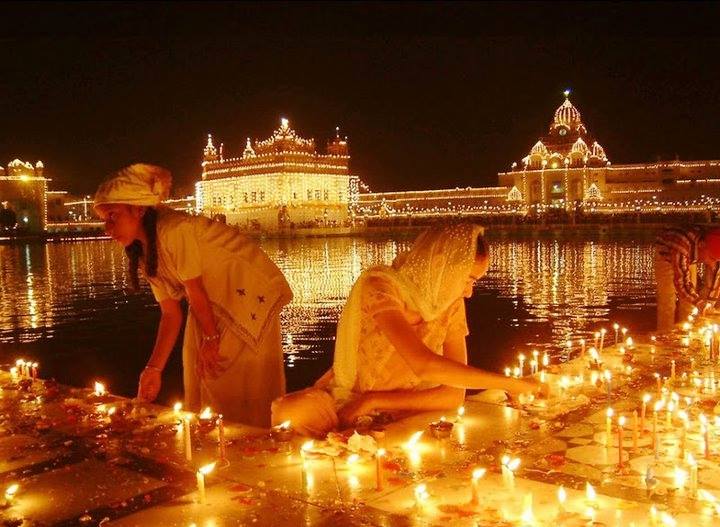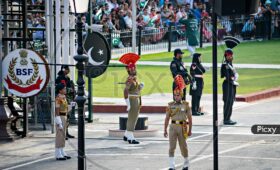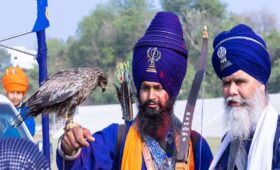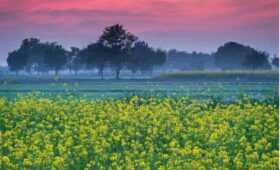Introduction
Diwali, also known as the Festival of Lights, is one of the most widely celebrated festivals in India. This festival holds significant cultural and religious importance and is observed with great enthusiasm and zeal by people from various communities. Among the many places where Diwali is celebrated, the Golden Temple in Amritsar stands out as a shining example of how this festival unites people in the spirit of love, devotion, and harmony. In this article, we will explore the Diwali celebration at the Golden Temple, delving into its history, the rituals, the significance, and the grandeur of the festivities that attract thousands of visitors from across the globe.
Table of Contents
Diwali Celebration at the Golden Temple in Amritsar: A Spectacle of Lights, Devotion, and Unity 1
The Golden Temple: A Spiritual Oasis 1
Historical Significance of Diwali at the Golden Temple 1
The Lighting of the Golden Temple 1
Sikhs and Non-Sikhs Celebrating Together 2
Langar: The Free Community Meal 2
Significance of Diwali at the Golden Temple 3
The Golden Temple: A Spiritual Oasis
The Golden Temple, also known as Sri Harmandir Sahib, is not just a religious site, but a symbol of Sikhism’s spiritual and architectural splendour. Located in the heart of Amritsar, Punjab, this gilded shrine attracts millions of visitors every year. The temple is surrounded by a vast and serene body of water known as the Sarovar, adding to the tranquillity and beauty of the site. Diwali, at the Golden Temple, is a sight to behold, as it transforms into a beacon of light and spirituality during the festivities.
Historical Significance of Diwali at the Golden Temple
The Golden Temple has a rich history, and its connection with Diwali can be traced back to its foundation. The foundation stone of the temple was laid by Guru Ram Das, the fourth Sikh Guru, on a Diwali day in 1577. The temple was then completed by Guru Arjan Dev, the fifth Guru of the Sikhs, in 1601. Diwali at the Golden Temple is celebrated to mark this historical event and to honor the memory of Guru Ram Das and Guru Arjan Dev.
The Lighting of the Golden Temple
The highlight of the Diwali celebration at the Golden Temple is the lighting of the temple complex. The entire temple, including the four entrances, the parikrama (circumambulation path), and the holy pool, is adorned with millions of oil lamps and candles. The sight of the gilded temple shimmering in the glow of these lamps is nothing short of breath taking. The reflection of the illuminated temple on the tranquil Sarovar adds to the enchantment, making it one of the most beautiful and serene sights in the world.
Devotees, both Sikh and non-Sikh, come together to light the lamps. The community participation in this act of lighting symbolizes the unity and togetherness that Diwali stands for. The collective effort to illuminate the temple complex is a testament to the idea of dispelling darkness with light, both literally and metaphorically.
Sikhs and Non-Sikhs Celebrating Together
One of the most remarkable aspects of the Diwali celebration at the Golden Temple is its inclusivity. The Golden Temple is open to people of all faiths and backgrounds, and during Diwali, it becomes a place where people from diverse cultures and religions come together to celebrate the festival. Sikhs and non-Sikhs alike participate in the rituals and enjoy the festivities, making it a truly secular and harmonious celebration.
Langar: The Free Community Meal
Langar, the community kitchen at the Golden Temple, is renowned for its selfless service and its commitment to feeding the hungry, irrespective of their social or economic status. During Diwali, the langar serves a special feast to the visitors. The langar hall is beautifully decorated, and the volunteers work tirelessly to ensure that everyone is well-fed and taken care of. This act of serving free meals during a grand festival like Diwali embodies the spirit of giving and sharing, which is at the core of the festival.
The Diwali Akhand Path
Another important aspect of Diwali at the Golden Temple is the continuous recitation of the Guru Granth Sahib, the holy scripture of Sikhism. The recitation, known as the Akhand Path, is conducted in the days leading up to Diwali and culminates on the day of the festival. Devotees from all over come to the temple to participate in the reading or to listen to the sacred verses. The Akhand Path is a spiritual endeavor that promotes introspection, devotion, and a sense of oneness with the divine.
Fireworks Display
Diwali is also known for its fireworks, and the Golden Temple is no exception. While the use of fireworks during Diwali has garnered some criticism due to environmental concerns, the fireworks display at the Golden Temple is relatively modest and carefully monitored to ensure safety. The fireworks add to the festive spirit and bring a sense of jubilation to the celebration.
The Eco-Friendly Diwali
In recent years, there has been a growing awareness of the environmental impact of Diwali celebrations, particularly the use of firecrackers. In response to this, the Golden Temple has taken steps to make its Diwali celebration eco-friendlier. They encourage visitors to avoid firecrackers and promote the use of traditional lamps and candles instead. This shift towards a greener Diwali aligns with the Sikh principle of environmental stewardship.
Significance of Diwali at the Golden Temple
The celebration of Diwali at the Golden Temple holds deep spiritual and cultural significance. It represents the triumph of light over darkness, good over evil, and knowledge over ignorance. The lighting of the temple symbolizes the inner light that dispels the darkness of ignorance and leads one on the path of righteousness. The unity and inclusivity of the celebrations demonstrate the universal message of Diwali – that people of all backgrounds can come together in love, harmony, and celebration.
The Spiritual Experience
For the thousands of devotees and visitors who gather at the Golden Temple during Diwali, it is not just a visual spectacle but a deeply spiritual experience. The serene environment, the melodious recitations, the collective prayers, and the acts of service in the langar create a sense of peace and connection with the divine. Many pilgrims consider their visit to the Golden Temple during Diwali as a life-changing experience.
Conclusion
Diwali at the Golden Temple in Amritsar is a celebration that transcends religious boundaries and embraces the spirit of unity, love, and light. The grandeur of the illuminated temple, the devotion of the pilgrims, the selfless service in the langar, and the inclusivity of the celebration make it a unique and unforgettable experience. The historical and spiritual significance of Diwali at the Golden Temple adds depth and meaning to the festivities. As the Golden Temple opens its doors to people from all walks of life, it reminds us that the light of Diwali can bring people together, no matter their differences, in a world that sorely needs the message of unity and peace.



